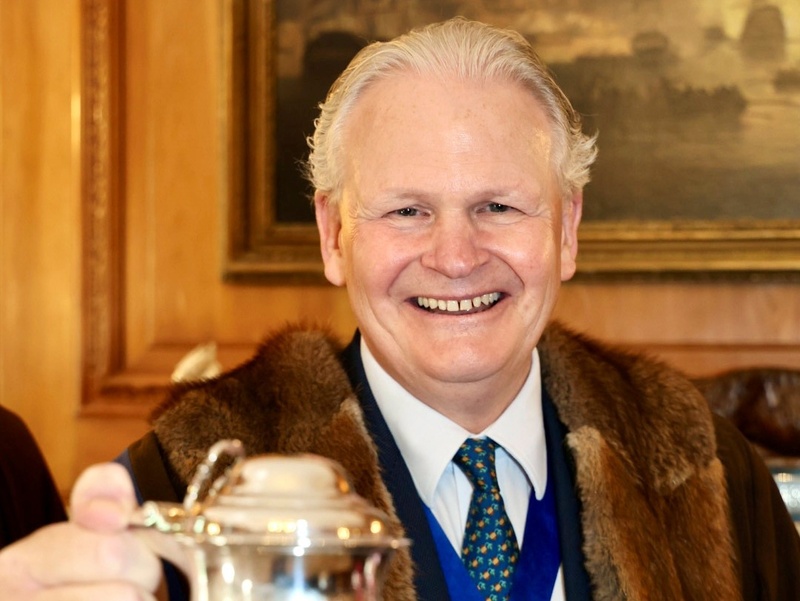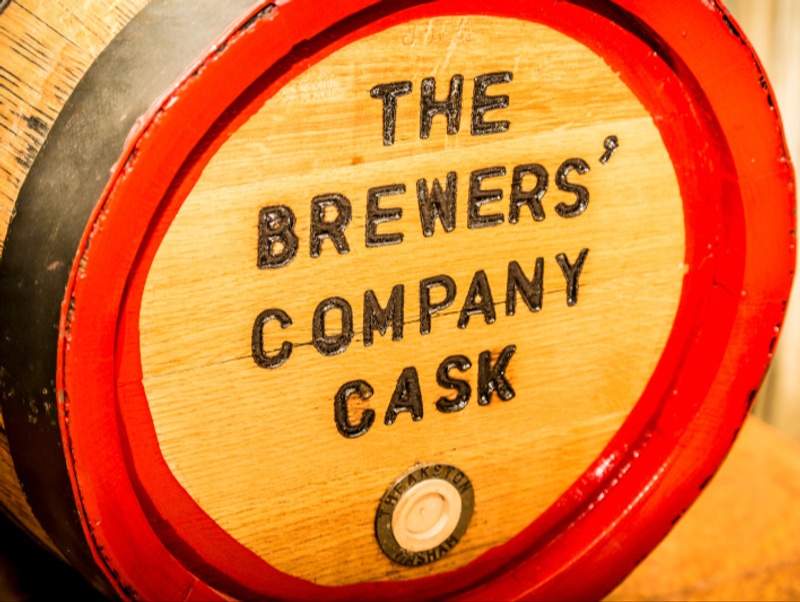Brewers' Book Launch with the London Record Society
26 March 2024

The launch of volume one of The Brewers’ Book – a transcription of the memorandum book of William Porlond who was Clerk to the Brewers’ Company from 1418 to 1440 - earlier this month was a roaring success. Co-organised by the Brewers’ Company and the London Record Society, the Hall was buzzing with 60 or so guests who had to be encouraged to leave after a glass or two of beer following the talks.
The current Clerk (the 28th that we know of) welcomed everyone to Brewers’ Hall, the same site on which William Porlond lived and worked as the second Clerk. After explaining the Company’s membership rules which keeps the Livery truly representative of its trade he handed over to Professor Caroline Barron, Chair of the LRS, who introduced the speakers.
Beginning with the author and editor, Caroline Metcalfe, who has meticulously transcribed and indexed the original handwritten text, she explained how she became interested in Porlond’s book through her interest in almshouses and completing an MA on the Brewers’ almshouse (which was on the same site as the Hall) using the extensive evidence recorded by Porlond. Having pored over the handwriting, crossings out and different languages she was persuaded that it would be a grand idea to publish a full transcript of the whole book. Over a decade and one pandemic later, we are delighted to launch the first volume.
Professor Laura Wright, a historical sociolinguist at the University of Cambridge, introduced us to the idea that Porlond was perhaps not at the influencer stage of the use of English, but was an early adopter (the book is written in the three languages of Latin, Norman French and English). English was not originally a world language and London wasn’t a world centre but with the developing wool trade and traders coming over from Flanders, they had to understand each other, and Norman French began to fall out of favour. However, Laura posited that Porlond’s importance was less in the change of his choice of language to English but in the number of pub names given! The most common name in the book is The Cock, something of a pun on stopcocks on barrels, but of course, many bird names are still used today (the Crane, the Eagle, the Falcon, the Peacock, the Pheasant, the Snipe, and many Swans, including white and black ones, and not forgetting the Cornish Chough).
Judith M. Bennett, Emerita Professor at not one but two American universities, specialising in the history of women in late medieval England, spoke about Porlond’s obsession with lists – of food and associated costs for dinners, for work and repairs to the Hall and almshouses, of cloth bought for gowns and hoods, and, most importantly for her research, of names of those who joined the Fraternity, paid (or failed to pay) quarterage, sold ale in false measures, contributed to fundraising and so on. Porlond’s lists are ordered by first name, so it was easy to spot the women and separate them out for further analysis. From this, she was able to establish that about a third of members were women, with 10% standing in their own right (not just as a wife of a Brewer). Sadly, often the women didn’t pay quarterage and dropped out of the membership; nor did they contribute much to fund raising nor attend feasts or the annual breakfast (the most powerful event in the calendar) regularly. This absence from the social life of the guild was probably due partly to them being poorer but also because they were unable to receive the full benefit of membership – they couldn’t wear the livery and were not allowed the freedom of the City.
The Master rounded off the evening with a few words of thanks. In recalling his formidable great-great aunt Hester who was Chair of St Austell Brewery from 1916 to her death in 1939, and informing the audience that, subject to election, the Brewers’ Company will have its first female Master next year, then, as now, women are still fewer in numbers in both the brewing industry and therefore the Company, nonetheless they play a significant role.


